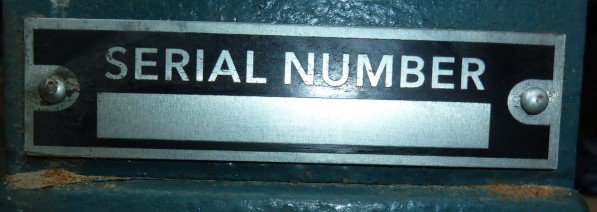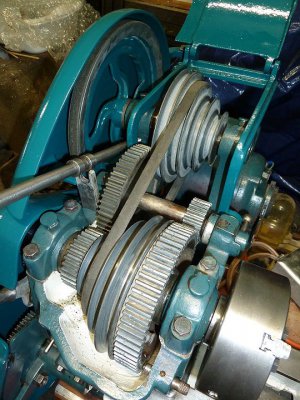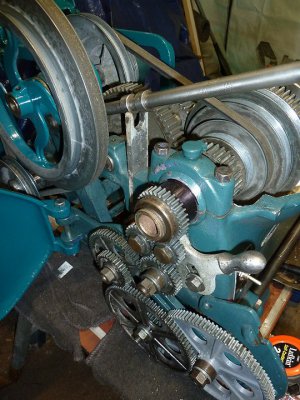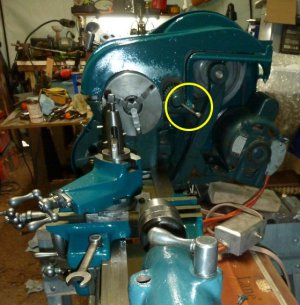Unfortunately in this case, my 3996 (same except for badges and nameplates as the 101.28990) has a radically different setup for the back gears (although the four gears themselves are the same) than did all of the 3/8" bed machines. So I have no feel for what the back gear lever should feel like. I do, however, understand how it works. The two eccentrics must be "in sync", meaning that their peak movement must occur at the same lever position. If that part of the machine hasn't had any parts replaced, that should be OK. There may be one or more shims under each pf the brackets that attach the two gears to the headstock casting. Nominally, there would be the same thickness of shims under both brackets. But in practice, this may not be the case. So if you remove the brackets and gears and this isn't the case, don't forget which shim(s) went under which bracket.
Starting with the lever in the fully disengaged position, the gear teeth on the two removable gears should not touch the teeth on the two spindle gears. As you move the lever toward the engaged position, the teeth on the two rear mounted gears should begin to mesh with the teeth on the Bull Gear and small spindle gear. As you continue to move the lever (knob), the teeth engage deeper and deeper and then start to move away. The shims were made in 0.002" and 0.003" thickness. Yours may have some of either or both. To check that the shims are the correct, remove on of the thinnest shims from under each bracket. Rotate the two rear mounted gears. The gear teeth should not touch. And you should be able to pass a 0.002" feeler gauge between each pair of gears with the pairs held toward each other with thumb and fingers of the left hand. Then try to engage back gears. When the teeth in each gear-pair are at their deepest mesh, they should not bottom out. It should not take significantly more effort to move the lever past the deepest mesh point than in other parts of the arc. I don't know which case will happen first. If neither case happened, remove another shim and repeat the checks.
Everyone must sooner or later decide how large a lathe is large enough for them. And remember that although within reason, a large lathe will turn small parts, it may not do it as conveniently. And pick your own poison, so to speak.




